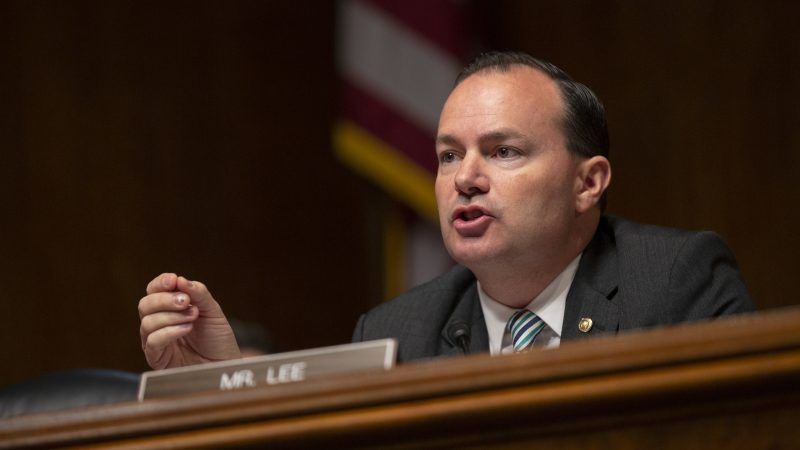Sen. Mike Lee Would Let You Decide if Drones Can Fly Less Than 200 Feet Above Your House
The Drone Integration and Zoning Act seeks to expand private property rights and give localities more say in airspace regulation.

A bill introduced in Congress this week would put 200 feet between your yard and the federal government's regulatory powers.
Sen. Mike Lee (R–Utah) on Wednesday announced the Drone Integration and Zoning Act of 2019, with the goal of shrinking the scope of the federal government and expanding property rights. His bill would distribute some of the Federal Aviation Administration's (FAA) authority over the nation's airspace to localities and private citizens by redefining "navigable airspace," broadly defined by the FAA as "the airspace at or above the minimum altitudes of flight that includes the airspace needed to ensure safety in the takeoff and landing of aircraft." His proposal would exclude airspace 200 feet above any given property from FAA regulation.
"The best way to ensure public safety and allow this innovative industry to thrive is to empower the people closest to the ground to make local decisions in real time," Lee said in a statement.
This would functionally prohibit any commercial or recreational drone operators from using the 200 feet above a property without receiving explicit consent from the property owner. Lee's bill would also grant local authorities control over the establishment of unmanned aircraft takeoff and landing zones within their jurisdictions.
Not everybody sees decentralizing drone regulation as a positive thing. The FAA opposes disseminating the regulation of "unmanned aircraft systems," (government lingo for drones) to the states.
In 2015, the FAA justified its total control over "navigable airspace" by expressing concerns over creating a "patchwork quilt" of differently regulated portions of U.S. airspace. In particular, the FAA worries that a federalist approach to airspace will threaten "safety [and] efficient air traffic flow." Essentially, the FAA says it should have sole dominion over the country's airspace.
The debate concerning drone use over private property is not new. In 2015, a Kentucky man was arrested after he shot down a drone that was hovering above his house since he thought it was recording his 16-year-old daughter sunbathing in his backyard. The man, William Merideth, was charged with wanton endangerment and criminal mischief for his actions.
David Boggs, the drone's owner, testified that his drone was higher above Merideth's house than Merideth had stated, claiming that the destruction of his drone was unwarranted. However, Bullitt County District Court Judge Rebecca Ward dismissed the charges against Merideth, due to eyewitness accounts placing the drone below the tree line on Merideth's property when Merideth shot it, declaring the drone's presence as a violation of Merideth's expectation of privacy on his own property.
Lee's bill is an attempt to give greater clarity to what is a somewhat murky legal situation. For now, the FAA recommends operating drones "at or below 400 feet." But without more clearly defined property rights, those guidelines seem to only encourage confrontations like the one between Merideth and Boggs.
The case is also a good demonstration of why the federal government should allow localities to determine their own guidelines for mundane activities like drone use; local authorities are better equipped to craft policies more in line with local values than a federal bureaucracy. Lee's Act might very well make it more challenging for companies or recreational drone users to operate their aircrafts, but it will also allow Americans' property rights to take to the sky.


Show Comments (61)